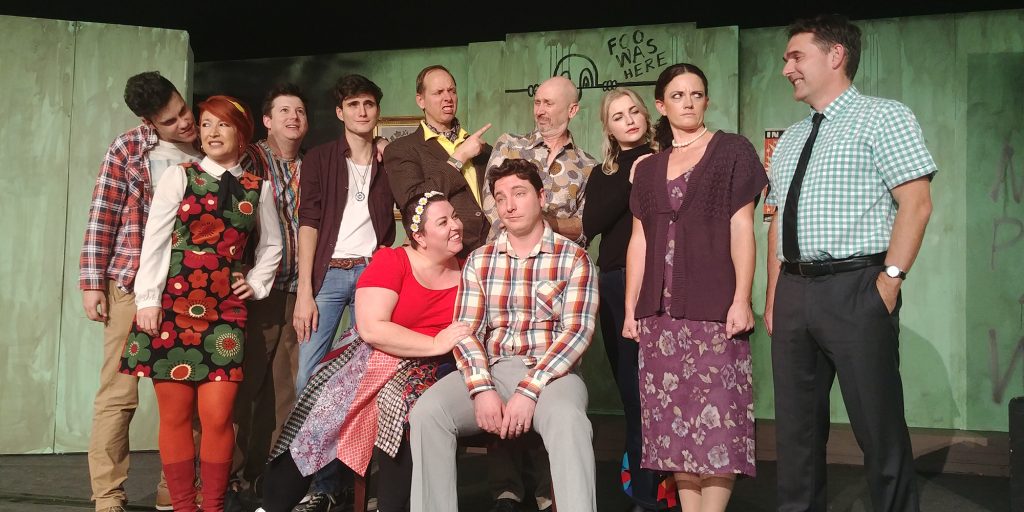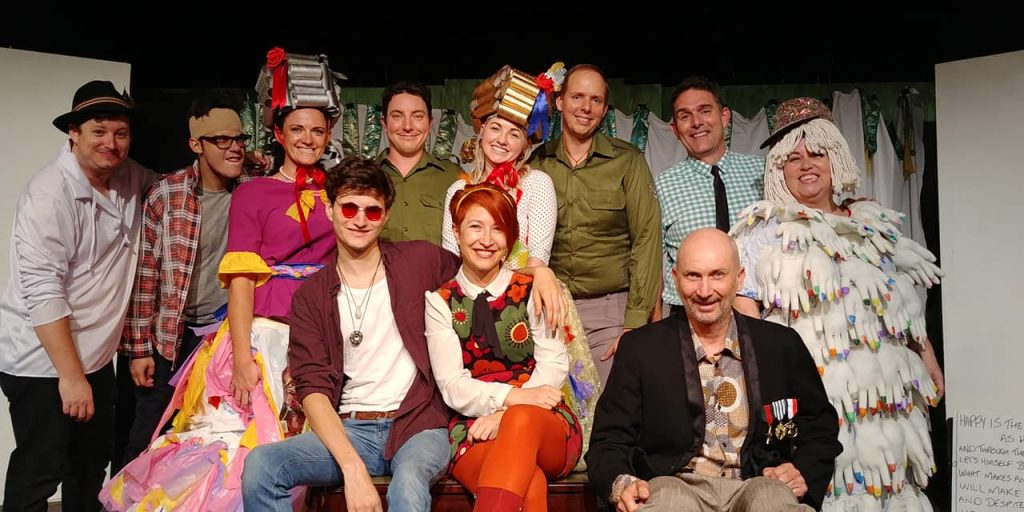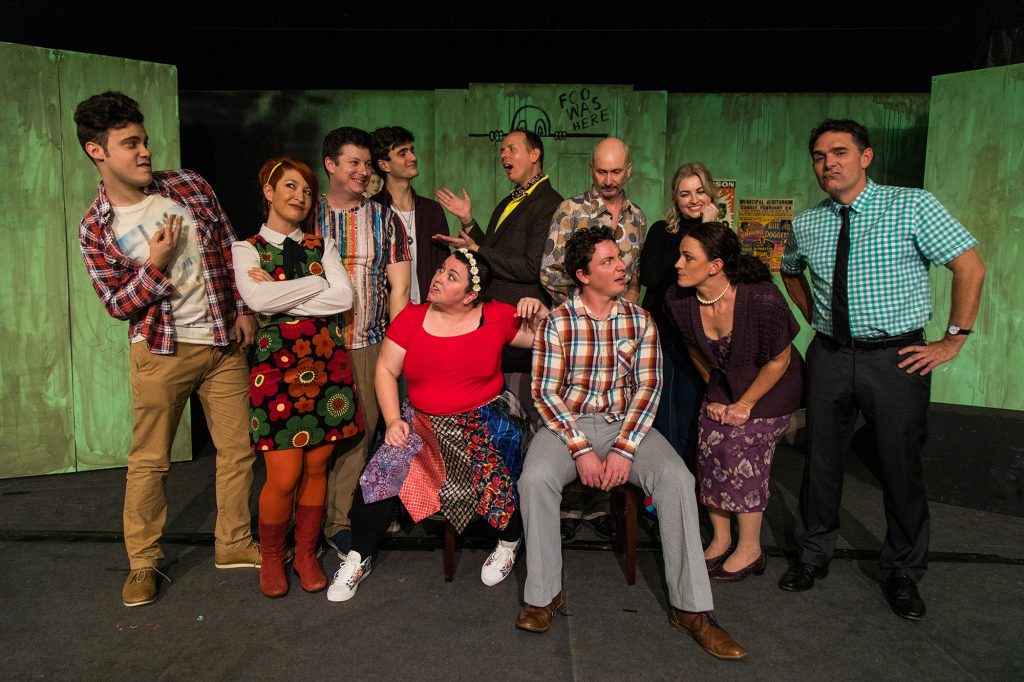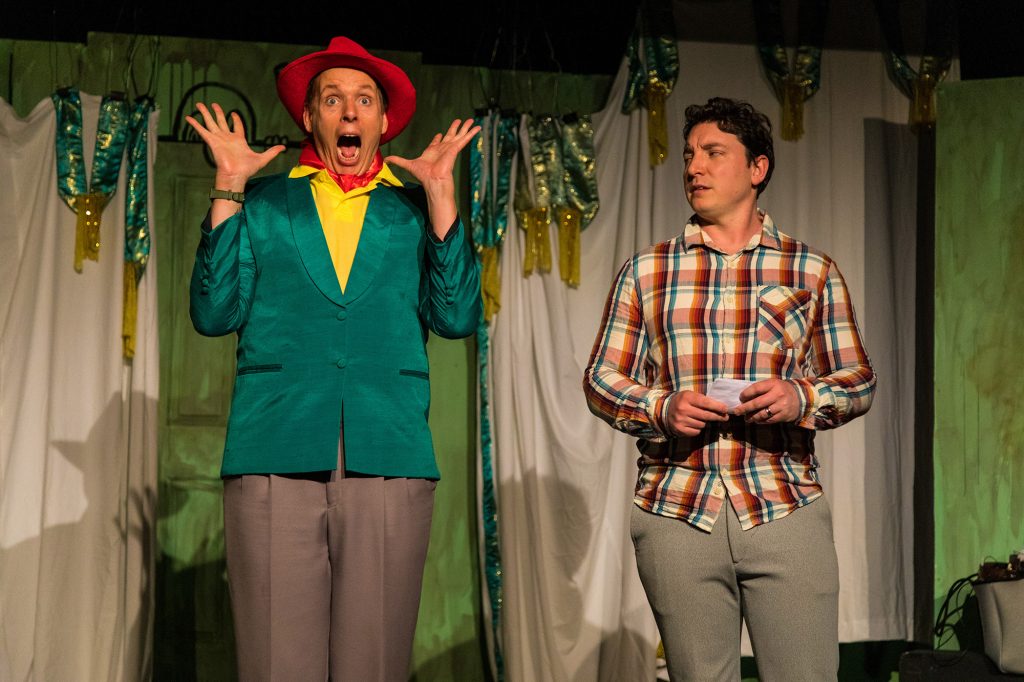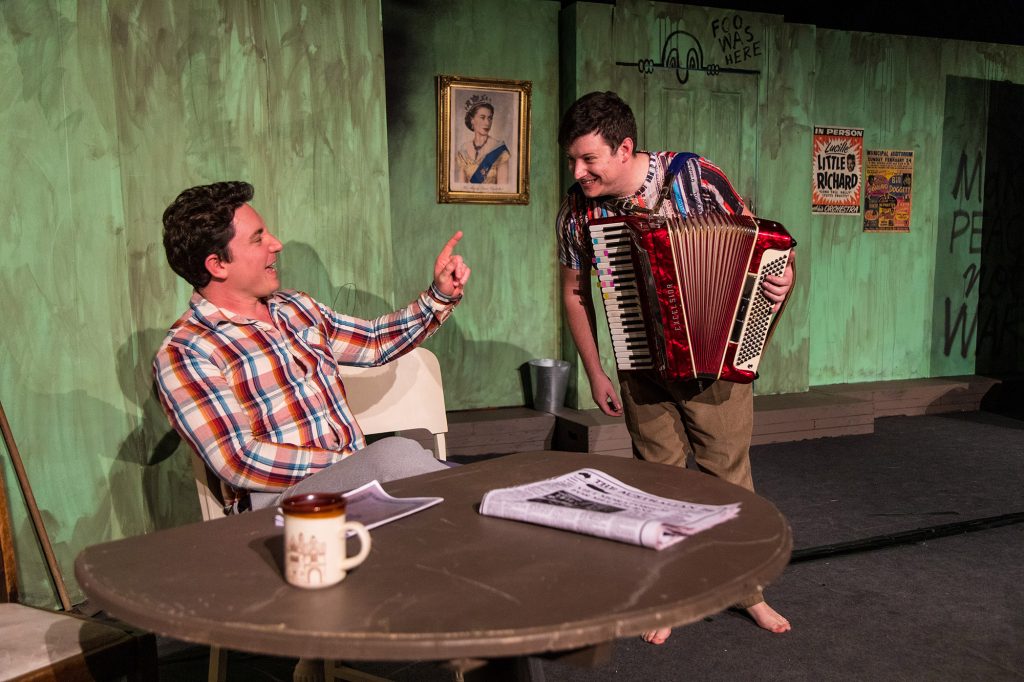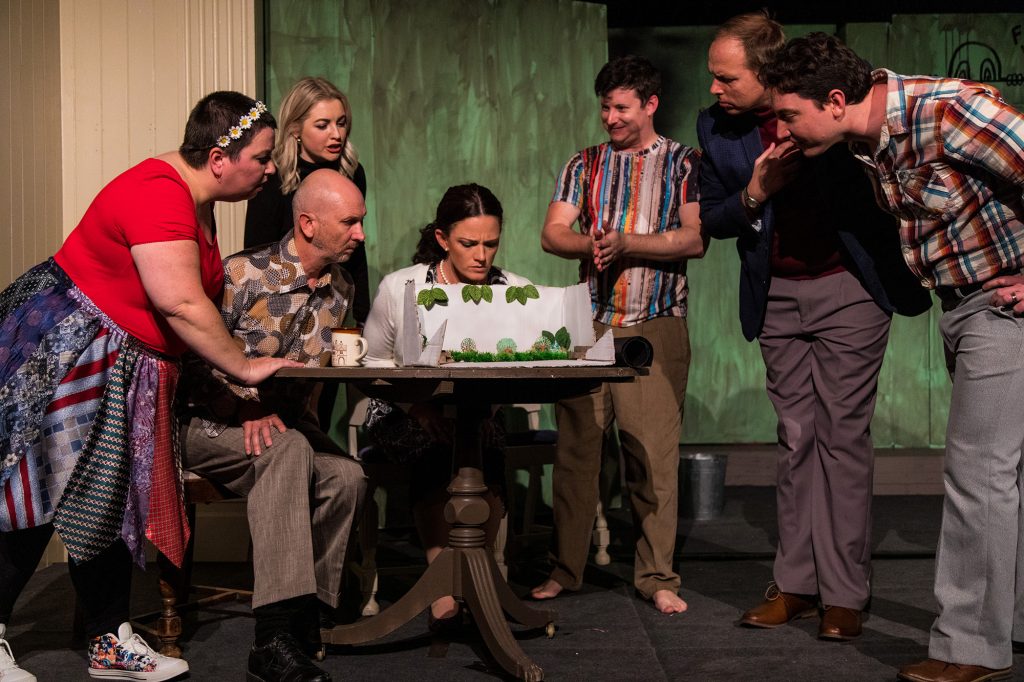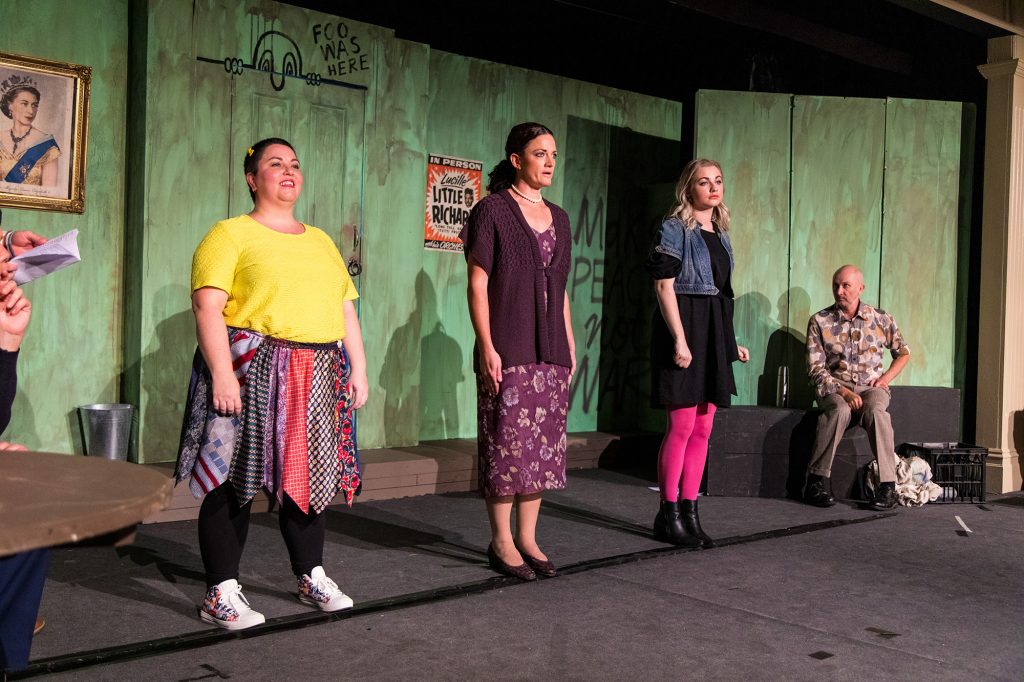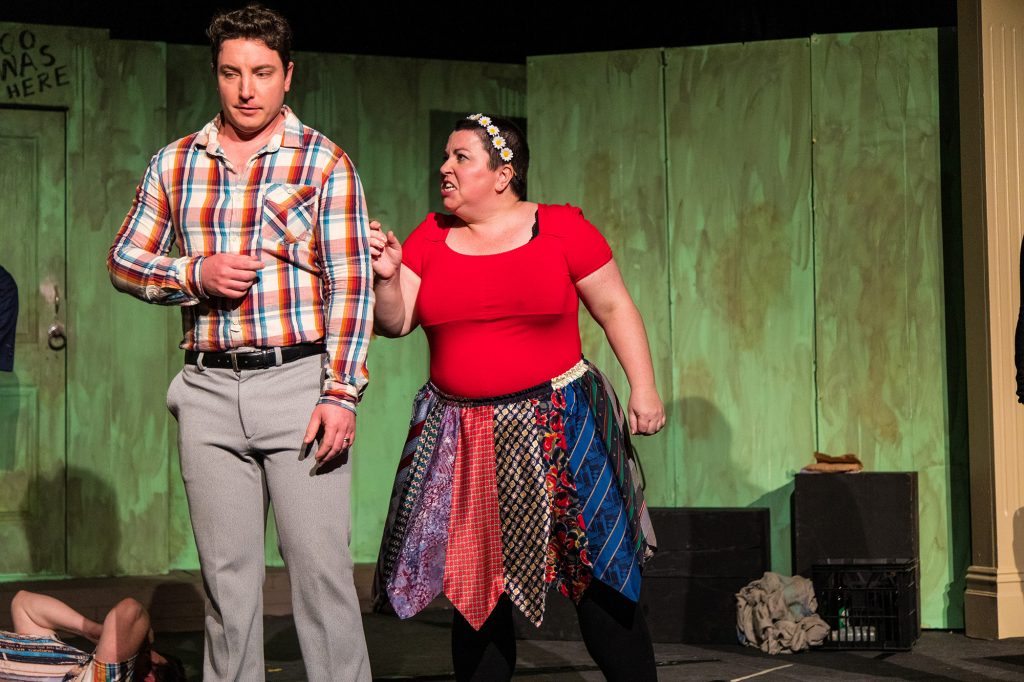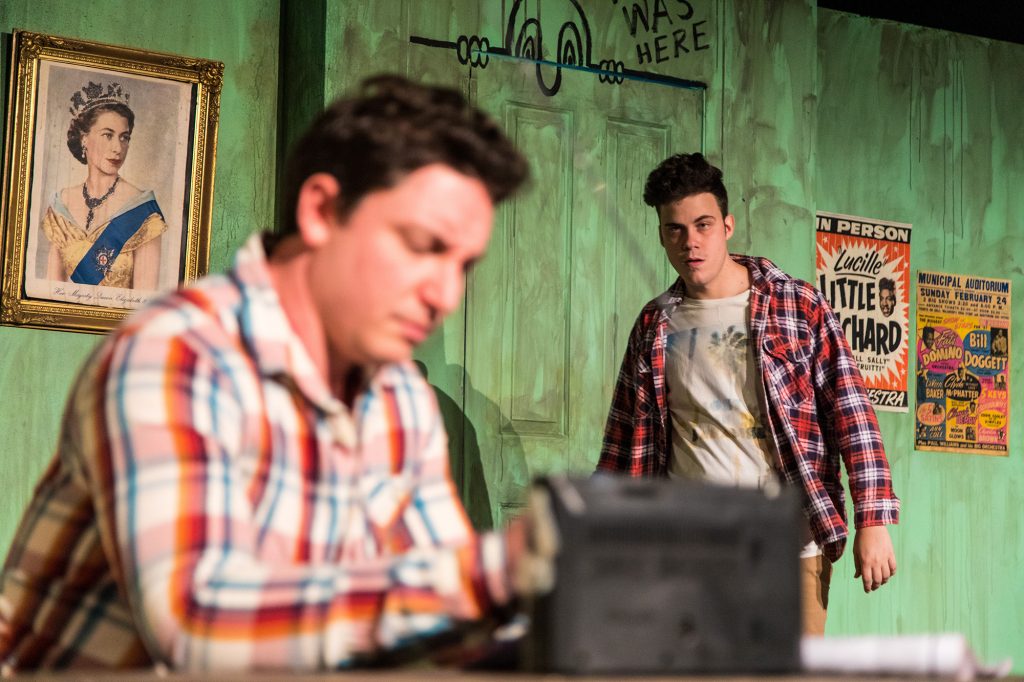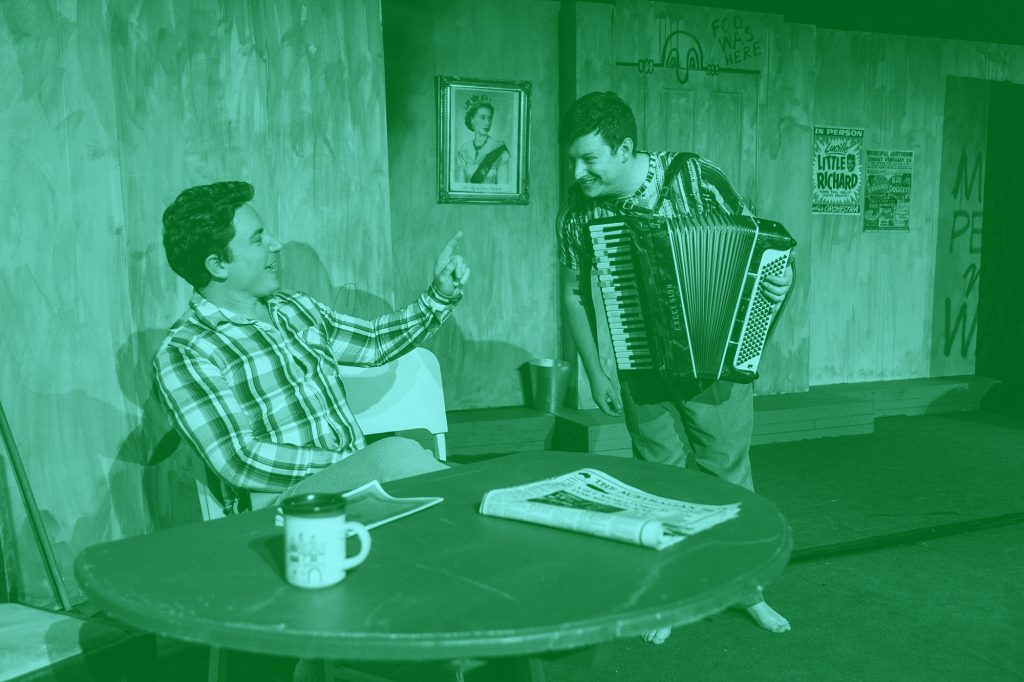
‘Cosi’ // Growl Theatre
‘Cosi’ was unhinged.
‘Cosi’ by Louis Nowra is arguably one of the most popular pieces of Australian theatre. It’s a work that even with some outdated themes still stands the test of time. For any community theatre group, it’s a great choice – particularly for a team who want variety. The play, which is filled with madness, music and Mozart, offers actors a mixed bag of roles where they can truly flex their emotional muscles. Not to mention, for audience members, there are enough highs and lows within the content to make us ‘feel’ on several levels.
Presenting their rendition of Nowra’s semi-autobiographical classic, Growl Theatre has showcased their entertaining take which is full of lunacy. Exploring the lines of reality and illusion, normality and insanity, and fidelity and love, the Windsor-based group have ambitiously pulled together a nicely woven show that with a few attention-to-detail tweaks, does justice to the infamous play. Although there were opening weekend nerves aplenty, an adoring crowd supported the group’s efforts wholeheartedly.
Set in the 1970s, ‘Cosi’ follows the story of Lewis, a university graduate desperate for work, who has agreed to direct a play with patients from a mental institution. Taking on the task of mounting a production of Mozart’s ‘Cosi Fan Tutte’, Lewis, under strong pressures and in difficult circumstances, begins to understand himself more than ever before. On the inside, he becomes more emotionally involved with his patients as the operatic production lurches forward. On the outside, anti-Vietnam War protests rage, and Lewis distances himself from his former friendships and relationships.
Directing duo, Simon Corvan and Kathleen Yorston, have taken ‘Cosi’ at face-value and have allowed the complex characters to stand on their own. We gained insight into quirky obsessions, health complexities and mental illness. There were beautiful characterisations from some actors, who, under Corvan’s and Yorston’s guidance didn’t overplay the boundaries of ‘crazy’.
In terms of pace, the show lagged with drawn-out scene changes and overused blackouts that left audience members audibly restless. The overall tempo of the production could have varied more, to find peaks and valleys within the emotional content. Additionally, Mozart’s opera music felt inconsistent and a bit Déjà vu during the lengthy blackouts.
There were also confusing and inconsistent costume changes that occurred between scenes. For anyone who knows the script, the play moves in days, but in this production, some characters remained in the same attire, while others changed shirts or added jumpers/hats. It would have been a wise choice to either leave them in the same costume throughout (until the opera) or map out a timeline to transition costumes as the script transitions scenes. There were also some conflicting costume choices, for example during the opera scene, one could question the choice of Cherry’s bedazzled hat – it felt a decade or two too early.
Set Design by Jason Sharland consisted of a green mottled room, with black smoke licks on the crowd left side of the space. Essentially a burnt-out theatre in an asylum, the action takes place in this central location that’s been deserted for some time. With graffiti-like scribblings on some of the walls, like ‘Foo was here’ and male appendages, it felt like this attribute was half-done. If Sharland wanted to enhance a sense of abandonment, the markings could have been more definitive and consistent. Also, a poster of Little Richard on the wall seemingly pre-empted one of the gags within the script and didn’t really fit within the abandoned, institutional motif.
When it came time for the opera scene, a patchy-glam curtain on coat hanger rods was pulled across, and the green walls were popped away. This really identified the space as an asylum with limited supplies. The coat hangers were a great touch and their screeches as they drew open and closed was a natural effect that highlighted the absurdity.
Mentioned previously, actors challenged themselves in various roles that realised a wealth of diverse characterisations. As the larger than life Roy, Charles Langford was perfectly cast. His variations as the manic depressant were measured and he delivered a standout performance. Langford’s quips and snide one-liners provided much of the comic relief within the play. Having read in the programme that Langford has taken a four-year hiatus from acting, it was comforting to see him return to the spotlight, and his performance was expressive and commanding.
Another great characterisation came from Daniel Coster as the pyromaniac Doug. His seediness and bogan-like swagger really brought out the role’s slimy nature. Having no care for physical boundaries, Coster was fearless and fiery as he espoused the “virtues” of free love and violence.
Damian Smith as Henry made the audience care. A character of very few words, Smith handled the physical demands of the role well. His facials sold a lot of his feelings, avoiding eye contact and turning away in shyness. Smith overcame this timidity with great success.
As the leads, Aaron Watson was the lacking-in-confidence Lewis, Lauren Flood was the drug-addicted Julie, and the pair brought delightful chemistry to their onstage relationship. Watson’s expressions highlighted Lewis’ lack of understanding within the absurdities he found himself in and Flood really embraced her characters dependencies. In fact, it was obvious Flood had invested a lot of time to detail her performance – even when she wasn’t saying much on stage, her physicality (including a bouncing knee or picking at her arm where she obviously had once injected heroin) showed her neediness to escape her confined world. For Flood, it was “acting and reacting” done at its finest.
As the best friend to Lewis, Akiwa Cavanagh played Nick and embraced the characters 1970s cool charm. Although a small role, Cavanagh was memorable and made us roll our eyes over the cheating, self-obsessed left-wing radical. Rhiannon Said was a preppy Lucy, who was equally self-absorbed. While their characters stood strong alone, there was room to explore the chemistry between the love triangle of Cavanagh, Watson and Said to make this storyline more believable.
Vivien Whittle as Ruth handled her OCD-tendencies well. At times, her portrayal felt a bit too aggressive for a character who is quite self-conscious and lacks an ability to distinguish reality from illusion. Leisa Bye was full of energy as the obsessed and tempered, Cherry. Once again, it would have been great to see a bit more variation between Cherry’s bite and bark, and less playing her as downright ‘crazy’. Rounding out the cast, Brendan James was a slow and steady burn as the comatose, Zac, and Robert Connaughton controlled the chaos in the minor role of Justin.
Growl Theatre has taken on the challenge of ‘Cosi’ and triumphed within their community. Despite a few inconsistencies, their adoring fan base had a riot regardless, and it was evident the comedy and pathos successfully translated. As always, this dedicated troupe aren’t afraid of any battle and it’s always worth noting what they’ll get up to next.
The madness of ‘Cosi’ continues until Saturday, 29 June 2019 at Growl Theatre (Windsor School of Arts). For bookings, visit http://growltheatre.org.au/event/cosi/.




